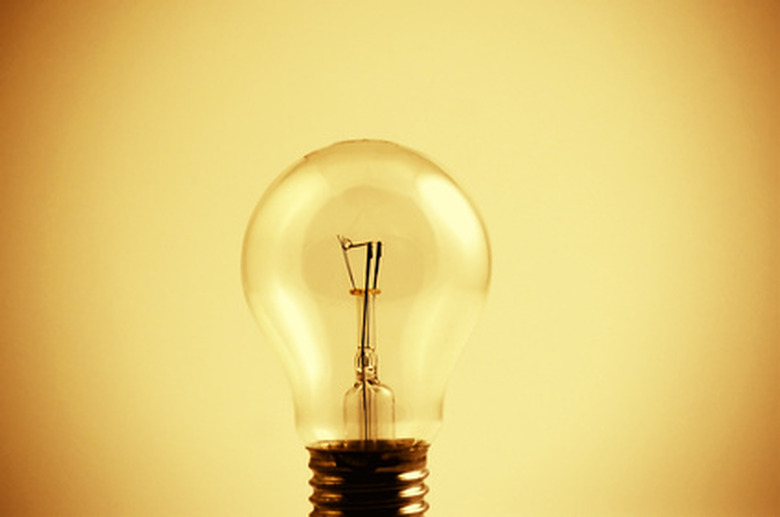Plant Growth Under Different Lights
If your houseplants aren't showing many signs of life, it could be that you aren't providing the right types or amounts of light for them. In their natural environment, plants receive their light from the sun, which provides a full spectrum of light wavelengths that meet all of a plant's needs. In an indoor environment, the light you provide may provide for some needs but not all, reducing the health and vigor of your houseplants.
Function
Light serves an essential purpose for plants, driving the biochemical process by which plants convert water and carbon dioxide into sugar, powering growth and other life processes. Visible light contains different wavelengths or colors of light, all of which are present in sunlight. Different colors of light affect plants in different ways. For example, red light spurs flowering, while blue light encourages leafy growth, according to the Oregon State University Extension. Plants don't use green wavelengths at all. In fact, the green light bouncing off of plants is what gives them their green coloration.
- If your houseplants aren't showing many signs of life, it could be that you aren't providing the right types or amounts of light for them.
- In their natural environment, plants receive their light from the sun, which provides a full spectrum of light wavelengths that meet all of a plant's needs.
Types
Unlike sunlight, indoor lighting generally provides light only along limited wavelengths. Incandescent light provides red wavelengths, while fluorescent lights emit primarily blue. Among the more specialized lights available for indoor growing, high-pressure sodium lights provide red light. Metal halide lamps contribute a range of colors, depending on the balance of chemicals in the light tube.
Effects
Blue light, provided by fluorescent and some metal halide lamps, encourages leafy growth of your plants. According to the Oregon State University Extension, in most growing situations, you want to provide predominantly blue light to encourage full, dense growth of stems and leaves. Red light acts more as a timekeeper for plants, allowing them to detect day length and adjust flowering so that flowers emerge at the appropriate time of year. As a result, when applied for the right amount of time, incandescent and high-pressure sodium lights encourage plants to develop flowers. Relying on red-light sources alone, however, causes plants to appear spindly and underdeveloped due to long, leggy stem growth.
- Unlike sunlight, indoor lighting generally provides light only along limited wavelengths.
- According to the Oregon State University Extension, in most growing situations, you want to provide predominantly blue light to encourage full, dense growth of stems and leaves.
Expert Insight
In most situations, a balance of blue and red light meets plant needs adequately, and the University of Missouri Extension recommends 30 watts of incandescent light for every 100 watts of fluorescent.
Warning
Consider the location of the lights as well: lights placed too far from plants don't provide strong enough light to encourage healthy growth. Ideally, place plants 6 to 12 inches from the light source. When using incandescent lights, however, take care that the plants don't become too warm. Incandescent bulbs give off heat as well as light.
